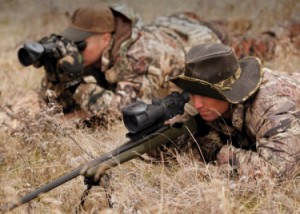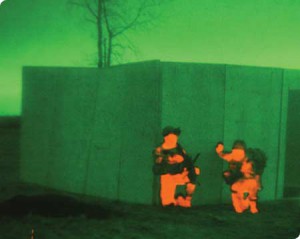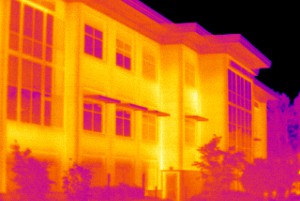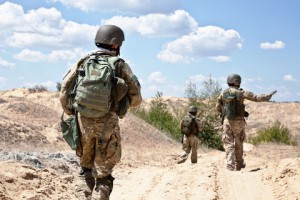This month, I want to address a question that we get several times a day:  What is the ideal setup for hunting?
What is the ideal setup for hunting?
The answer is going to greatly depend on the type of hunting you intend to do. Thermal Night Vision (Image Intensifiers) and Thermal have different performance capabilities. Night vision is better for identification while thermal is better for detection.
On their own, they work great, but in tandem, they are unstoppable. Before we get carried away, keep in mind that I am addressing an ideal setup.
Yes, this gear is expensive and buying everything at once is not in most people’s budget. But, this is an article about the gear to look at over the course of several years or as you can afford it.
The ideal setup for a hunter will actually cross over into the ideal setup for those in law enforcement, military, and SOF. I like to keep my thermal night vision on my head; hands free and always ready. This allows me to easily patrol in the field, walk, run, climb, negotiate obstacles, etc. Since it is on my head, I don’t have to keep my weapon shouldered in order to use my thermal night vision.
My weapon will have an infrared laser attached. Night vision goggles are strictly observation tools. The laser is the aiming device.
You should not be deploying a firearm under goggles if you don’t have a laser. It won’t be fast or ideal.
The head-mounted thermal night vision goggle gives you the ability to clearly see and understand your surroundings.
A lot of guys ask about head-mounting a thermal imager. I am not fan of this. Thermal sees in absolute contrast. Most of the thermal imagers available on the civilian market are not going to provide the detail or be able to distinguish terrain features and variations as well as a thermal night vision device.
Sure, some thermals can accomplish this, but they are few and far between. Even then, walking around with thermal on your head is a good way to turn your ankle, fall down a hill, or trip over a tree root. If you don’t hurt yourself, you’re at least going to look like an ass clown in front of your buddies!
I suggest having a separate thermal imager. Proper patrolling; whether hunting or war-fighting is to move a certain distance and then stop, look, listen, smell. Rinse and repeat. During the intervals, you will use the thermal to scan for potential threats or targets.
Since thermal excels at detection, this is the perfect use. And, now that more affordable thermal weapon scopes are becoming available, you can slap one of these on your rifle and immediately engage a target if you come across something close by. If nothing is around, flip your goggle back down and continue on the patrol/hunt.
Using thermal night vision and thermal imagers in conjunction insures you have all your bases covered. You can effectively move, scan, detect, identify, and engage. Obviously, this technology does not replace good field craft, but it certainly gives you as much of an edge as you can get.
This article comes from ammoland edid released



